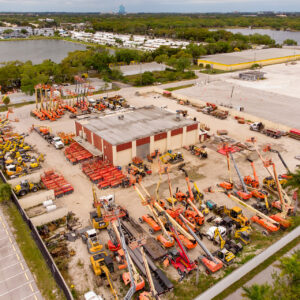 Business succession planning is a process of continuous preparation and risk management and is more applicable than ever, as 2020 has brought us unique challenges and opportunities.
Business succession planning is a process of continuous preparation and risk management and is more applicable than ever, as 2020 has brought us unique challenges and opportunities.
For construction contractors and the network of businesses that support the construction trade, recent obstacles caused by the pandemic do not change the simple fact that the transition of businesses will continue. Owners retire. Unexpected events happen. Business outlook changes. Tax laws change. These developments require careful review and planning. Fortunately, Sikich’s business succession planning process is consistent in that the focus is and always will be on the same five basic questions.
BUSINESS SUCCESSION PLANNING – 5 KEY QUESTIONS
Question 1: Are you ready?
Being ready involves having a written business succession plan that addresses preparation for the expected and unexpected exit. Our experience is that given adequate time, the planning process can yield a 10-20 percent increase in after-tax proceeds to the current owner(s).
The question of whether you are or are not prepared for succession is inclusive of the governance structure; continuity plans; the next generation of owners and leaders; willingness to innovate and invest for the future; as well as the financial strength of a firm.
For background, continuity planning involves protecting the value of the business by identifying and protecting the business’ most important assets such as key employees and customers as well as intellectual property. Also important are existing business agreements and insurance to protect the firm against unexpected events, like death or disability of key employees or owners. When a current owner exits, bonding agreements or credit agreements may be at risk if there isn’t additional funding or security available from the existing and new leadership teams. Continuity planning additionally involves having a disaster recovery plan in place to ensure that the business and systems can continue in the event of a natural disaster.
Further, key employee retention strategies must be considered and implemented during the delicate time of ownership and leadership transition to ensure the business avoids disruption caused by key employee departure. Exiting owners of a firm likely make key contributions in financial management, operations, estimating, business development, or other technical areas, and each of these key areas must be addressed with successor leadership.
The strength of an organization’s balance sheet is also very important. Often overlooked is the fact that the construction firm and its ongoing cash flow is what ultimately funds the purchase by new owners. This generally holds true regardless of who the buyer is and whether it is an ESOP, a management team, or an outside and unrelated buyer. The cash strain of a buyout on the balance sheet needs to be stress tested considering the demand for growth and investment capital as well as the fulfilment of continuing shareholder needs. Financial terms of a purchase of stock or assets may also require adjustments given these realities, which is especially true given the uncertain times we live in and the economic impact of the pandemic.
“Being ready” is ongoing. This is not a one-time project undertaken a few years before a planned retirement for an owner. Opportunity sometimes presents itself at the most unexpected moments and being prepared is critical to seizing that opportunity. Start now. Implementing necessary changes takes time.
Question 2: Who is the successor?
The first inclination for construction firms is to look internally. There may be family or management team members who make good candidates for future ownership and/or leadership. Often, we find that companies have a solid team to take over leadership but lack the financial capacity or risk tolerance to take an ownership position. In this scenario, the owners must first consider whether they are doing enough to retain these key leaders. Then, the best path to ownership transfer should be assessed. Another alternative is finding a strategic buyer, such as another construction firm or a financial buyer like a family office or a private equity group.
Due to the unique circumstances of each firm, we rarely see a one-size-fits-all approach work. Our experience is that the initial attempt of transferring the ownership usually does not go as planned, and we must reset expectations or consider alternatives. This emphasizes the need to start the process early.
Question 3: How much does each owner need?
When an owner exits the firm, it often means they are fully retiring. As each of us consider retirement, we must perform personal financial planning to determine what resources we need in retirement. Owners of construction firms are like most other business owners in that a significant part of their personal wealth is tied up in the construction firm itself and other investments tied to the firm.
Thus, the valuation of the firm and projection of after-tax proceeds is a critical part of the succession planning process. Valuation will most certainly be impacted by the current economic conditions caused by the pandemic.
In addition to obtaining a current valuation of ownership in the construction firm, the planning process involves accumulating an inventory and value of all personal assets, such as real estate, retirement plans, and other assets. These assets and other income sources, like Social Security, will provide an income stream in retirement. Lastly, a retirement budget of one-time and ongoing expenses will have to be prepared.
Many times, there is a gap between the needs of the owner and the available income stream from accumulated assets. Planning is required to fill that gap. Timing of the exit could be delayed, structure of the buyout could be changed, or budgeted expenditures in retirement may need to be reviewed.
Question 4: What is your timeline for an exit?
Defining a timeline for an exit provides a goal for all parties involved, allows identified successors to prepare and train to assume a bigger role, and allows them to prepare financially for personal guarantees that may be required.
The timeline will be impacted by the first three questions. Retention strategies for key employees and tax planning or restructuring may be needed. The bonding company may have input on the financial strength of the company and/or the future owners and their financial strength. How much each owner needs may also impact the timeline, and the structure of a management buyout may have to be reconsidered to make the financial terms work for all parties involved.
Keep in mind that this only refers to a planned and orderly exit from the business.
Question 5: What is next?
In order to set a timeline for an exit, owners must have a vision for the future and a personal plan. Some owners want to stay involved in the industry on a consulting basis or assume a role as a board member or advisor. Others may have other unrelated interests they want to pursue.
Not having a plan for yourself after exiting the construction firm is problematic and causes the timeline for an exit to be prolonged, possibly leading to frustration of younger leaders and future owners. It can also cause resentment to build as younger leaders continue to create value in the construction firm, knowing that they may be required to pay more for an ownership interest later.
Summary
Business succession planning for construction firms involves gaining an understanding of the unique circumstances facing the firm and then working with the owners and other advisors to craft a plan that works. It takes time and focus from leadership in the firm and the advisory team.
Sikich LLP has extensive experience working with construction and real estate firms in business succession planning. Please contact Tom Bayer, co-leader of the Business Succession Planning Service Area, for a complimentary consultation of your current situation. Tom can be reached by email at tom.bayer@sikich.com.





